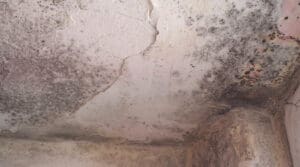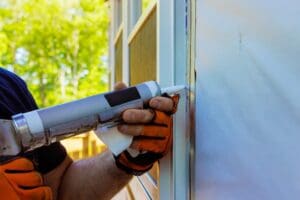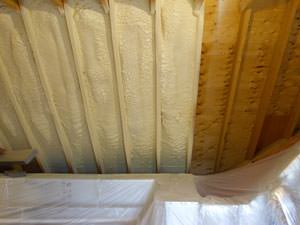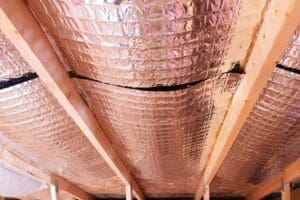- Updated: June 10, 2025
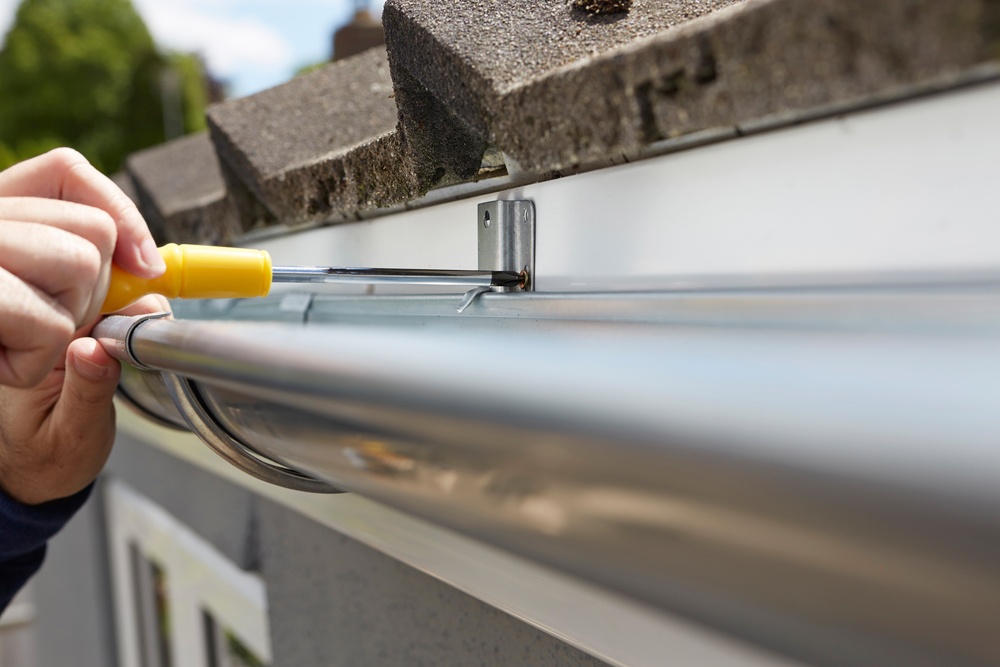
For homeowners, performing maintenance on roofs and gutters isn’t the most exciting thing, but it’s one of the most important things they should do. These crucial structures are what protect the longevity of your home. It causes quite a dilemma when both your gutters and your roof need to be replaced. In this blog, we’ll discuss the functionality of your roof and gutters, how to evaluate their conditions, and what to consider when deciding when to replace gutters or your roof first.
Table of Contents
The Functions of Roofs and Gutters
A roof provides shelter and protection from harsh weather conditions, acts as a thermal regulator, and supports the structural integrity of a home. Its weight-bearing capabilities keep the walls, foundation, and other components in place, which prevents sagging and structural damage. Proper ventilation and sound insulation reduce moisture buildup and mold growth for a healthier living environment. A well-maintained roof also boosts curb appeal and adds value to a property.
Gutters protect foundations, prevent water intrusion, and maintain exterior integrity. They direct rainwater away from the structure to prevent damage to siding, windows, and doors. Roofs and gutters are carefully designed to work together to orchestrate the optimal water flow away from your home.
Assessing the Condition of Your Roof and Gutters
Evaluating Your Roof
To prevent roof damage, inspect the roof from the outside, identifying areas with wear and tear, debris, or leaves. Check for buckled shingles or granule loss, as they can allow water to drip into the home. Regularly check the attic for signs of roof wear and tear, especially after heavy rain. Clean gutters and downspouts are essential for maintaining water drainage and preventing moisture issues in basements and crawl spaces. If possible, climb to the highest point on a ladder and visually inspect the roof for damage around gutters and chimneys. If necessary, consider using a drone camera for better coverage.
Inspecting Your Gutters
A gutter inspection involves preparing gloves, a ladder, and buckets to inspect the slope and consistency of your gutters. Remove debris and dirt, check for damage, and perform a water test. Then use a garden hose to remove any leftover debris and insert it into the downspout to flush out stubborn dirt. Monitor the water flow and check for leaks, and if debris buildup is present, spray water directly into the downspout. If a hose or spray isn’t effective, use alternative equipment.
Check for erosion beneath the gutters and install splash blocks to absorb water impact and direct flow. If necessary, consider using different cleaning equipment. Inspect your gutters for standing water, secure hangers or spikes, and check for gaps between the gutters and the structure. If the water is slow or accumulating, it may indicate a lack of steepness in the slope. Replace or re-secure hangers or spikes if loose. Finally, inspect your gutter aprons for gaps between the gutters and the structure using water hoses and observation techniques.
Factors to Consider When Deciding What to Replace First
Age and Condition
Roof lifespan depends on material, with asphalt shingles lasting 15-20 years and metal roofs 40-70 years. Tile and slate roofs can outlast houses, but poor installation or neglect can shorten their lifespan. Gutters have shorter lifespans, with aluminum lasting 20 years, copper lasting 50 or more, and vinyl lasting 10-20 years.
Budget and Costs
The cost of replacing gutters or a roof depends on the size and materials used. Asphalt shingles are the most affordable option, while metal roofs offer longevity. Gutter repair costs vary based on material and linear footage. Combining these projects can save labor costs. Investing in quality materials is crucial for protecting your investments long term.
Weather and Timing
Factors like temperature fluctuations, heavy precipitation, and debris accumulation can affect the longevity of roofs and gutters. Understanding the expected lifespan helps assess the current condition and identify areas requiring immediate attention.
NORTHEAST WISCONSIN'S ROOFING EXPERTS
Pros and Cons of Replacing the Roof First
Pros
- Roof replacement is more extensive and may unintentionally damage your gutters. Replacing your roof first means you won’t have to worry about damaging your gutters.
- Making sure you have a solid foundation with your roof first can provide better overall protection.
Cons
- Higher immediate cost.
Pros and Cons of Replacing Gutters First
Pros
- Gutters are generally less expensive and quicker to replace than a roof.
- New gutters can immediately address any water diversion issues.
Cons
- New gutters may need to be removed during roof replacement.
- May have limited protection if the roof is still in poor condition.
Recap
Homeowners need to perform timely maintenance on their roof and gutter systems to get the most out of their lifespans. Seek out professional advice from our techs if something from your roof or gutters looks weakened, damaged, or is not performing at its peak. We provide roof replacement, gutter replacement, and gutter installation services to the residents of northeast Wisconsin. Schedule an appointment with the experts at Keeney Home Services for a professional inspection and consultation.
FAQs
Can I replace gutters without replacing the roof?
Yes, gutters can be replaced independently of the roof as long as the roof is in good condition. However, if both systems are aging, coordinating their replacement can be more efficient, cost effective, and reduce future disruptions.
How often should gutters be replaced?
Gutters can last from 20 to 30 years, depending on the material, climate, and maintenance. Regular inspections, maintenance, and repairs can help extend their functional lifespan.
Do gutters get damaged during roof replacement?
While reputable roofing contractors take precautions to protect gutters during roof replacement, minor damage can occur, especially if the gutters are old or were improperly secured in the first place.
In what order do you install a roof?
Roof installation generally follows this sequence: removal of old roofing, inspection and repair of the decking, installation of underlayment and flashing, placement of shingles (or other roofing material), and then cleanup and final inspection. Following this process can ensure long-term performance and adherence to manufacturer warranties.

